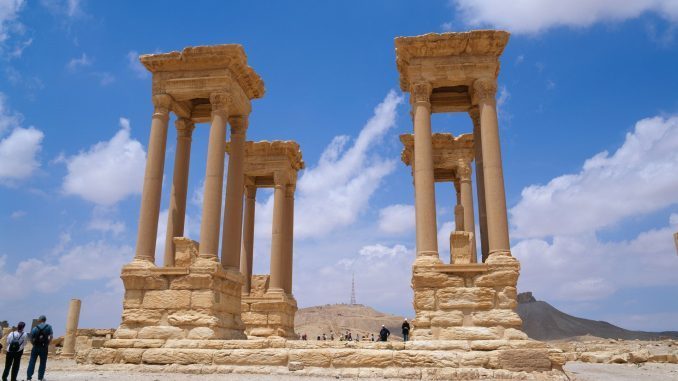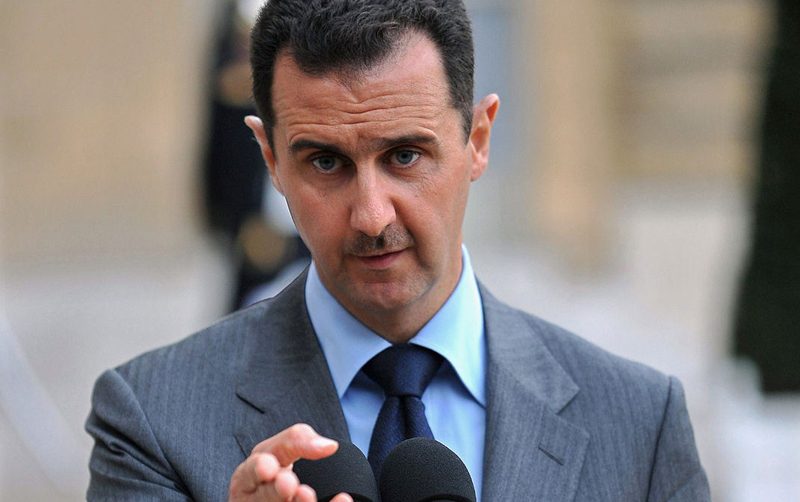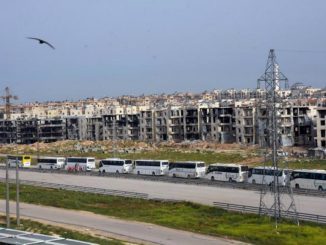
Islamic State militants demolished two monuments in the ancient city of Palmyra a month after recapturing it from government forces, continuing their previous brutal attack on the Syrian heritage and archeological sites.
The Assad regime lost control of Palmyra to Islamic State in December, the second time the group had overrun the UNESCO world heritage site in the six-year Syrian crisis.
Isis first captured Palmyra, once a Silk Road oasis that boasted some of the best-preserved ruins of antiquity, in May 2015.
Assad regime backed Russian forces reclaimed the city from Isis in March, only to lose it to a counter-offensive in December.
Reports said that the militants have destroyed a tetrapylon and part of a Roman theatre in the ancient city of Palmyra.
Maamoun Abdulkarim, Syria’s antiquities chief, said on Friday that ISIL destroyed the tetrapylon – a 16-columned structure that marked one end of the ancient city’s colonnade, and part of the facade of the Roman theatre.
“Yesterday [Thursday] we received satellite photographs from our colleagues at Boston University showing damage to the facade of the Roman amphitheater,” he told AFP news agency.
“This is a horror film and we will see more of it, as long as the city is under their control it will remain a hostage,” said Abdulkarim.
“This is a scandal. Palmyra is occupied and there is no outrage from the international community. We are trying to protect a civilization. It’s beyond political considerations. There needs to be international solidarity.”
He said he learned of the destruction 10 days earlier but chose not to release the details until the publication of satellite images by researchers from Boston University.
A war crime
Irina Bokova, director-general of UNESCO, condemned the attack calling it a “new war crime”.
“This destruction is a new war crime and an immense loss for the Syrian people and for humanity.
“This new blow against cultural heritage – just a few hours after UNESCO received reports about mass executions in the theatre – shows that cultural cleansing led by violent extremists is seeking to destroy both human lives and historical monuments in order to deprive the Syrian people of its past and its future,” Bokova said.
Satellite imagery sent by Abdulkarim to Reuters showed it largely destroyed, with only four of 16 columns still standing and the stone platform apparently covered in rubble.
The imagery also showed extensive damage at the Roman Theatre, with several towering stone structures destroyed on the stage. Just last May, a famous Russian orchestra performed at the theater after Palmyra was first won back from Islamic State.
Omar Albenia, a spokesman of the council of Palmyra and Badia condemned the vandalism, while castigating the Syrian regime for allowing jihadists to reclaim the city.
“This is a great loss for the people of Palmyra and what Palmyra stands for in history, because it is an important historical site that was well preserved over the years,” he told CNN.
“We at the council of Palmyra and Badia condemn this cowardly terrorist attack carried out by ISIS and also place the blame of the Syrian regime of what is happening in Palmyra when the city of Palmyra has exchanged hands between ISIS and the Syrian regime several times.”
Albenia added that the council had been surprised at the Syrian regime’s decision to leave Palmyra when it was not secure. He questioned why Syrian government troops have been able to recapture Aleppo but not do the same in the comparatively smaller city of Palmyra.
Previous ISIS crimes in Palmyra
The attack is the latest in a campaign by Isis against the region’s heritage. The group has previously destroyed historic Assyrian sites in Iraq and other treasures in Palmyra.
During its previous spell in control of Palmyra, Islamic State destroyed other monuments there, including its 1,800-year-old monumental arch.
Syrian archaeologists had transferred many artifacts including about 400 statues to Damascus to prevent further destruction if Isis returned, but many reliefs and buildings remained at the site and were vulnerable to destruction.
in 2015, ISIS blew up the ancient temple of Baal Shamin. Baal Shamin was built in 17AD and it was expanded under the reign of Roman emperor Hadrian in 130AD.
Isis mined the ancient site in June before destroying the lion statue, a unique piece made of limestone that stood more than three meters high (10 feet) that stood outside a museum. Funerary busts were also destroyed.
The temple of Bel in Palmyra was also destroyed by ISIS in 2015. the Temple of Bel as Palmyra’s most important site and the most important temple in the Middle East alongside Baalbek in Lebanon.
ISIS militants publicly beheaded in 2015 the city’s 81-year-old head of antiquities, Khaled al-Assad, after he helped remove artifacts from the museum and refused to reveal the location of hidden treasures from the Unesco World Heritage Site.
The Syrian crisis began as a peaceful demonstration against the injustice in Syria. Assad regime used to fire power and violence against the civilians and led to armed resistance. 450.000 Syrians lost their lives in the past five years according to UN estimates, and more than 12 million have lost their homes.





